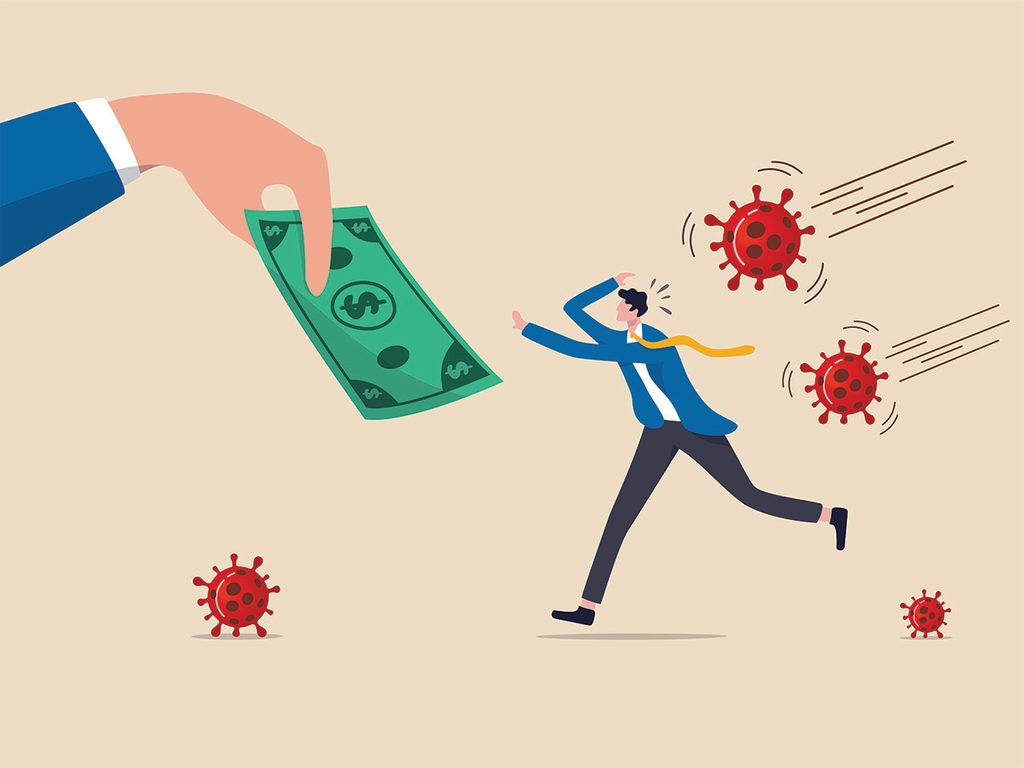A Money Lesson We All Should Take Away From 2020

The old saying "hindsight is 20/20" has taken on a very literal meaning in this pandemic year. Use it as a powerful prompt to prioritize being financially fit.
Here are my top money takeaways from 2020 so far:
1 Emergency Fund
The best thing that you can do to get through a tough period is to have money set aside in an emergency fund. If you have the opportunity to save even a little, start today. It’s not always easy, but whatever amount you can sock away now will go a long way when you need it. Conventional wisdom suggests having an emergency fund that’s large enough to cover several months’ worth of expenses. What 2020 has taught us is that the more months of cash you can set aside, the better.
(Related: 5 Money Tricks That Can Help You Save $1,000 a Month)
2 Budget
How much do you actually need in your emergency fund? The easiest way to find out is to create a budget so that you know exactly how much you spend. To do this, take your most recent credit card and bank statements and enter them in a spreadsheet. If this sounds tedious, the good news is that most banks have an online personal financial tracker that automatically totals all spending from credit and debit cards for you so that there is nothing left to do on your part. One of the great things about having a budget is that it makes you aware of all your expenditures and helps you see what you can cut out, if necessary.
(Related: Why You Should Consider Responsible Investments)
3 Investment Portfolio
Everyone has different comfort levels when it comes to investing in the stock market. Some people have a high-risk tolerance and invest all their money in the market, while others are risk averse and limit themselves to fixed-income investments (such as bonds and GI Cs). Most people fall somewhere in the middle, with part of their portfolios in both stocks and fixed-income investments. Whatever this mix of stocks and bonds, you should always make sure to rebalance it at least once a year.
For example, say your ideal mix is 50 percent in stocks and 50 percent in bonds. After a good year in the stock market (like 2019), the stock part of your portfolio may grow to 55 or 60 percent, pushing your fixed-income investments down to 40 or 45 percent. This is a “riskier” portfolio than your longterm target, though, because you now have more in stocks. As a result, you should sell some stocks and buy more fixed-income investments to bring your portfolio back to a 50-50 mix.
Though it may seem counterintuitive to rebalance your portfolio by selling stocks while the market keeps going up, it will be better for your wallet and well-being in the long run. To make it easier to remember, set a regular date (like at the end of the year) to rebalance your portfolio back to your target mix, regardless of what the markets are doing. If you had done so at the end of 2019, it might have saved you from some of the losses in 2020.
Jordan Campbell, CFA, is an associate portfolio manager at Manulife Securities.
Now that you know the top money lessons of 2020, learn three ways to manage your money better.




